For some of my previous trips, I've made photo albums after-the-fact (you can see those here). For Greece and Rome I did travel blogs, and I'll be doing the same for Croatia.
I only have one week here (5 - 12 April, including travel), but that should be enough. Some days will be mostly relaxing (it is a vacation, after all), and some will be more structured.
- Wednesday, 5 April 2023
- Thursday, 6 April 2023
- Friday, 7 April 2023
- Saturday, 8 April 2023
- Sunday, 9 April 2023
- Monday, 10 April 2023
- Tuesday, 11 April 2023
- Wednesday, 12 April 2023
Wednesday, 5 April 2023
Click here to load all images for this day.

1301 Since some of you may not know where Zagreb is, here's a map! There is an amusing cutout near the southern tip of Croatia so that Bosnia and Herzegovina can have a bit of a coastline. Just two years ago, a bridge over that section was opened so that drivers can stay in Croatia while traveling to and from the southernmost tip.

1356 This was really just a travel day, so I don't have any good photos to share except from my AirBnB. My flight arrived a bit later than I expected, so the host wasn't able to meet me in person, but they did leave a nice personalized note (along with some apples, which I conveniently used to make charoset).

1366 I think my Seder plate looks pretty good! I bought the matzah in Poland and packed it in my suitcase because I didn't want to be searching for matzah right after landing. The chicken was from a Mediterranean restaurant and made for a delicious dinner. The other ingregients—nuts, eggs, horseradish, etc.—were easy to get at a nearby grocery store.
Thursday, 6 April 2023
Click here to load all images for this day.

1386 The main square of Zagreb.

1390a The square is named after Josip Jelačić, who abolished serfdom in Croatia in the 1840s.

1390b This fountain in the main square is actually ancient, having originally been a natural spring and later a town well. A commonly retold legend is that the name “Zagreb” comes from Jelačić and a woman meeting and falling in love while the woman was gathering water from this well (in truth the origin of the city's name is unknown).

1407 The Green Market, a large farmers market near the main square.

1401 The Zagreb Cathedral. It and many other buildings nearby are still under repaired after being damaged by two earthquakes in 2020.

1404 Happy Easter! This is a display next to the Zagreb Cathedral.

1429 The roof of St. Mark's Church has the coat of arms of Zagreb on the right. The coat on the left is for the country of Croatia and consists of smaller coats for the regions of Croatia (red and white squares), Slavonia (a weasel, representing the fur trade), and Dalmatia (three lions). By the way, Dalmatia is indeed where the dog breed originates.

1400 A former defensive tower whose cannon now annonces 12 noon every day in Zagreb. (I have a video, but I'm too tired to upload it right now.)

1430 Part of the original stone gate around the medieval town of Gradec, which merged with Kaptol (the religious town on the adjacent hill) to become Zagreb.

1431 Under the stone gate is a wooden painting of Mary which survived the fire that destroyed much of the original wall.

1479 Originally, Kaptol and Gradec were separated by a river, and the “bloody bridge” over it was the cite of several conflicts between residents of the towns. In the 1800s, polution from an upstream leather factory lead to the river being diverted, and today the former location of the river is a street full of shops and restaurants. (I think this photo might be of a parallel street and not the exact correct place for this story, but oh well.)

1457 This sign in an otherwise nondescript parking lot says “The synagogue of the Zagreb Jewish community, built in 1867 and demolished by fascist vandals in 1941, stood on this site.”

1455 I took a walking history tour. One of the first stops was this statue of Stjepan Radić, a politician in the Kingdom of Yugoslavia (which existed from 1918 to 1941 and is not to be confused with Communist Yugoslavia, 1945 - 1992). He was assassinated along with four others during a meeting of the Yugoslav parliament by Serbian representative Puniša Račić in 1928.

1459 The Zagreb tunnels are a bomb shelter built during WWII. They are often open to the public but are closed for this April. Our guide substituted a photo of the tunnel for the part of the tour that would normally be inside the tunnel (this focused on Tito and Communist Yugoslavia).

1477 This privately owned bomb shelter is used as part of the history tour and is a mini museum about the Croatian War of Independence (1991 - 1995), which followed the breakup of Communist Yugoslavia.

1468 The dates in the last caption were not a mistake. The Croation Homeland War (or War for Independence) was fought in the 1990s, along with several similar conflicts between the former components of Yugoslavia.

1460 Our tour guide, Ivana, was born during the Croation Homeland War. Her mother was a refugee who was forced out of Bosnia around 1990. The personal story was a fascinating addition to the more clincal / factual content of the rest of the tour.

1486 After all the discussion of tragic recent history, I decided the Zagreb Chocolate Museum would be a nice change of pace. The ticket for this museum is literally a box of chocolates, with samples tailored to the various rooms of the museum.

1489 The Chocolate Museum starts with rooms devoted to Africa and South America.

1493 Chocolate drinks (originally very bitter) existed long before solid chocolate.

1508 One of the more enjoyable parts of the museum are the unlimited self-serve pumps of liquid chocolate (dark, milk, and white).

1510 Of course, being me, I had to try various combinations as well.

1514 The last rooms focus on more modern forms of chocolate, including its commercialization.

1497 For each country, the numbers are yearly per capita chocolate consumption, chocolate exports, and chocolate imports.

1529 The plaque for Nutella notes that its modern formula has almost no chocolate at all (instead it uses palm oil for better consistency), but the company is still historically significant for European chocolate.

1538 The gift shop sells various chocolates, both Croatian and foreign. I resisted for now, but I might return on another day.
Friday, 7 April 2023
Click here to load all images for this day.

1567 The town of Rastoke is about 100 km (60 mi) south of Zagreb. I took a day trip to the Plitvička Lakes, and our van stopped here along the way.

1546 We also passed the Homeland War Museum near Karlovac. This was the best photo I could get from the van. Our guide/driver explained something that was probably also said during my walking tours but that was not quite clear to me then: part of the reason for the longstanding tension between Croatia and Bosnia was that while Croatia was part of the German / Hungarian / Austrian Empire for centuries, Bosnia was part of the Turkish / Ottoman Empire.

1579 The view of the Great Waterfall (right) and some of the Plitvička Lakes upon our arrival near the top of the canyon. If you look carefully you can see people walking down below, and that's where the next photo is from.

1592 Walking.

1619 The Great Waterfall is 62 m (203 ft) high.

1596 A neat rainbow effect.

1634 There are several multilingual signs warning people not the feed the ducks.

1637 The Plitvička Lakes are a series of waterfalls and slow-moving lakes in between them.

1640 After a lunch break we will take the boat you can see here across the largest of the lakes.

1642 Our tour guide lamented the fact that the food in the national park is quite basic and not even traditionally Croatian. Repalcing the bread with matzah certainly did not imporove it, but I did not want to skip lunch given all the hiking.

1643 The line for the boat was quite long. We had to wait about 20 minutes.

1665 One of the “upper lakes”, distinguised from the lower lakes in that is surrounded by hills and not canyon walls (compare to this earlier photo).

1667 Panorama of walking along the upper lakes. As you can see, the path was often right over the lake, with only a few inches of clearance and no guard rails.

1669 A nice reflection.

1687 Another waterfall. I forgot to record the name of this one.

1698 After walking to one of the higher stations, we took a shuttle bus back towards were we started (the top of the canyon in which the lower lakes reside).

1703 A final view of the Plitvička Lakes while walking along the canyon edge.
Saturday, 8 April 2023
Click here to load all images for this day.

1908 The Museum of Illusions in Zagreb is apparently one of the first such museums in world. (By the way, I am not upside down nor am I doing a handstand. This photo is taken in a mirror while I am flat on the floor.)

1852b Walking down this hallway, even while holding onto the railings, was legitimately difficult with my eyes open.

1853 Who doesn't love an mirrored dodecahedron?

1913 Like the dodecahedron, the Infinity Room uses mirrors to make infinite copies, but in this case the copies are all me.

1917 I'm not sure the straight line passing through the hyperboloid cutout really counts as an illusion, but it is neat. The images in the background are all classic visual illusions.

1882 Although I've seen many of them before, size comparison illusions are really hard to see correctly. The top of the two boxes are exactly the same size and shape (in person, you can hold the parallelogram up to the picture to compare), as are the two turquoise arcs.

1848 Ćevapi, grilled minced meat, are common throughout the Balkans. The waiter Batak Grill suggested I try it with both clotted cream and bell pepper relish (he was very nice, unlike Peele's character from a relevant skit).

1794 The Zagreb City Museum begins with a section on the archeological finds made during the building of the museum itself.

1801 This 1000:1 scale model of the area by Vladimir Milić shows the two medieval towns of Kaptol and Gradec with the river between them (see this earlier photo).

1804 This ceremonial chain was made for the Mayor of Zagreb has only been worn once post-WWII. It stays at the Zagreb City Museum full time.

1810 Statues taken from the Zagreb Cathedral.

1814 These ones are from St. Mark's Church, which today is recognizable by its colored tile roof (those tiles were only added in the 1800s, while the original church was built in the 1300s).

1821 A painting and mannequin of Josip Jelačić (of the eponymous main square and statue).

1831 I don't know exactly who this is supposed to be, but it was in a room devoted the theater in the 1800s. The Zagreb City Museum has a huge range of topics. This one museum includes...

1792 ...pottery from the 700s...

1826 ...a wrought iron engraving from the 1500s...

1817 ...a book from the 1830s (in German, as Croatia was part of the Austrian Empire at this time)...

1818 ...dishware from the late 1800s...

1833 ...a bicyle and t-shirt from the early 1900s...

1839 ...a radio from 1945...

1845 ...and several posters from the 1990s.
Sunday, 9 April 2023
Click here to load all images for this day.

1723 Museums are all closed on Easter, but the “Green horseshoe” in central Zagreb is still open for walking (except the Botanical Garden portion). This is a series of seven adjacent parks arranged in a U-shape.

1745 Another part of the Green horseshoe, which, by the way, also called Lenuci's horseshoe after its designer, urban planner Milan Lenuci.

1750 This sculpture by Fran Krsinic depicts the execution of prisoners in Communist Yugoslavia. I didn't see any plaque or marker, though, so it took some Googling to figure any of that out.

1753 Park Zrinjevac is the part of the Green horseshoe that is closest to the main (Ban Jelačić) square.

1762 The Blizanci Fountains were originally built in a different park within the horseshoe and later relocated.

1779 This meteorological post, built in 1884, is at the northernmost tip of the Green horseshoe. It shows temperature, seismic activity, and more.

1710 The Mimara Art Museum, a block away from the western tip of the Green horseshoe, has been closed for repairs since the 2020 earthquakes (note the red and white tape over the entrance), so for now one can only admire the landscaping out front.
Monday, 10 April 2023
Click here to load all images for this day.

1930 Today I am not in Croatia but in neighboring Slovenia. This is the Dragon Bridge in Ljubljana, the capital city.

1944 Central Ljubljana has several bridges.

1937 The Cathedral of St. Nicholas has an impressive set of bronze doors, installed in 1996. They depict Slovenian history chronologically from bottom to top, with the Crusades in the middle and Pope John Paul II at the very top.

1933 The covered market was closed for Easter Monday, as were museums.

1959 The Triple Bridge (from this angle the middle part is most obvious, but there are smaller bridges visible on either side) connects Prešeren Square (which is quite clearly a circle) to the town hall, behind which is Ljubljana Castle. Originally, the middle bridge was for cars, but since 2007 the entire Triple Bridge is within a pedestrian-only zone.

1952 This statue of Slovene national poet France Prešeren is in the namesake square. Above him is a Muse.

1939 The town hall and the Robba Fountain next to it (actually, a replica; the original is now in a museum). The fountain's three figures with jugs represent the three rivers in the area: Ljubljanica (seen earlier), Sava (which also flows by Zagreb and Belgrade), and Krka.

1948 The interior of the Franciscan Church of the Annunciation. This was during an actual Easter Monday service.

1970 From Ljubljana, our guide drove us to Bled, a town near the border with Austria. In this distance we can see the Julian Alps.

2048 Bled Lake has one of Slovenia's only islands and certainly its smallest.

2002 Bled Island is accessible by boat. (I took this photo from the island.) Rowing the larger boats is a job passed down through families for generations.

1992 The Church of the Assumption of Mary is really the only thing on the island, aside from a modern cafe.

2000a My photos of Castle Bled from a distance were blurry, so here is one I found online (credit: Arne Müseler). The trees are a bit more full than in all of my photos.

2032 Castle Bled. By the way, the flags of Slovenia (shown here), Croatia, and Serbia all have three horizontal bands (red, white, blue in various orders) and a coat of arms on top of that.

2050 There is a very small chapel inside Bled Castle.

2041 The castle houses a reconstructed Gutenberg printing press, from which you can buy custom sourvenirs. (By the way, the earlier written mention of Bled Castle is from May 1011; it was, by chronological necessity, handwritten and not from a printing press.)

2067 Honey is quite popular in Slovenia. There is a shop inside the castle that has many types of Slovenian honey, along with free samples.

2055 The town of Bled, viewed from the castle.
Tuesday, 11 April 2023

2088 The Nikola Tesla Technical Museum has only a small section that is actually about Tesla. In fact, it was just called the Technical Museum until a rebranding in 2015.

2106 Since Tesla is not really the focus, the museum has hundreds of devices from many different technological genres, from an electron tube tester ...
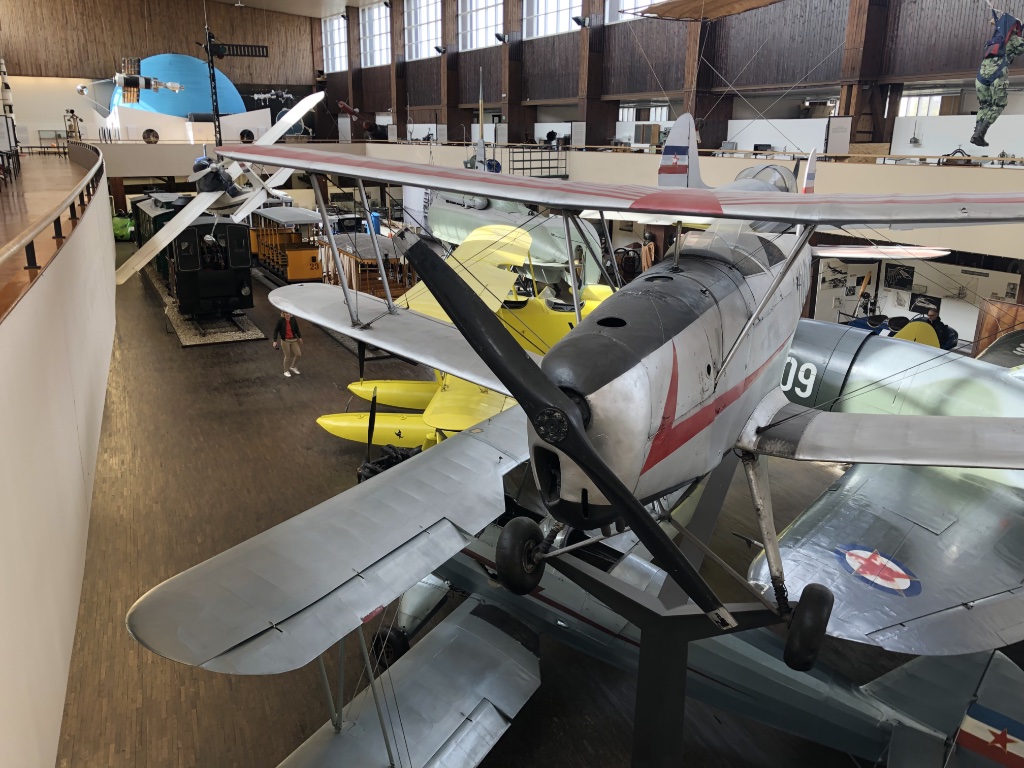
2099 ... to airplanes, trains, a soviet lunar rover, ...
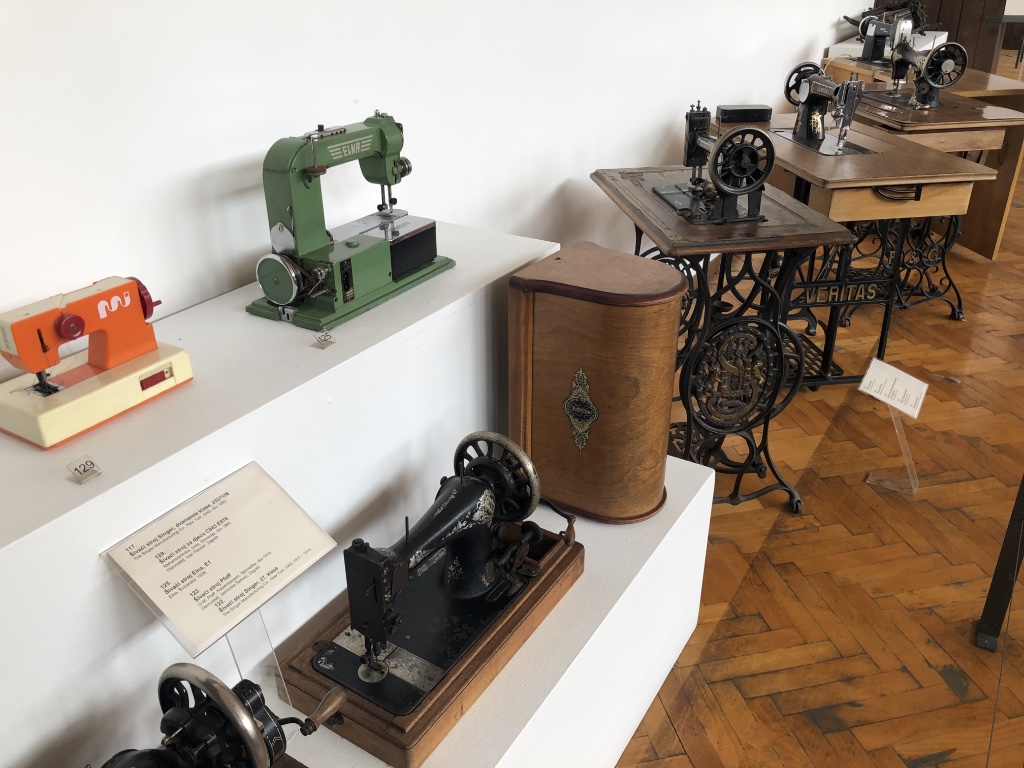
2101 ... to sewing machines. I learned that Singer's innovation was to make the needle vertical (sewing machines in the first half of the 1800s used a horizontal needle). There are also stoves, irons, refriderators, and other home appliances.
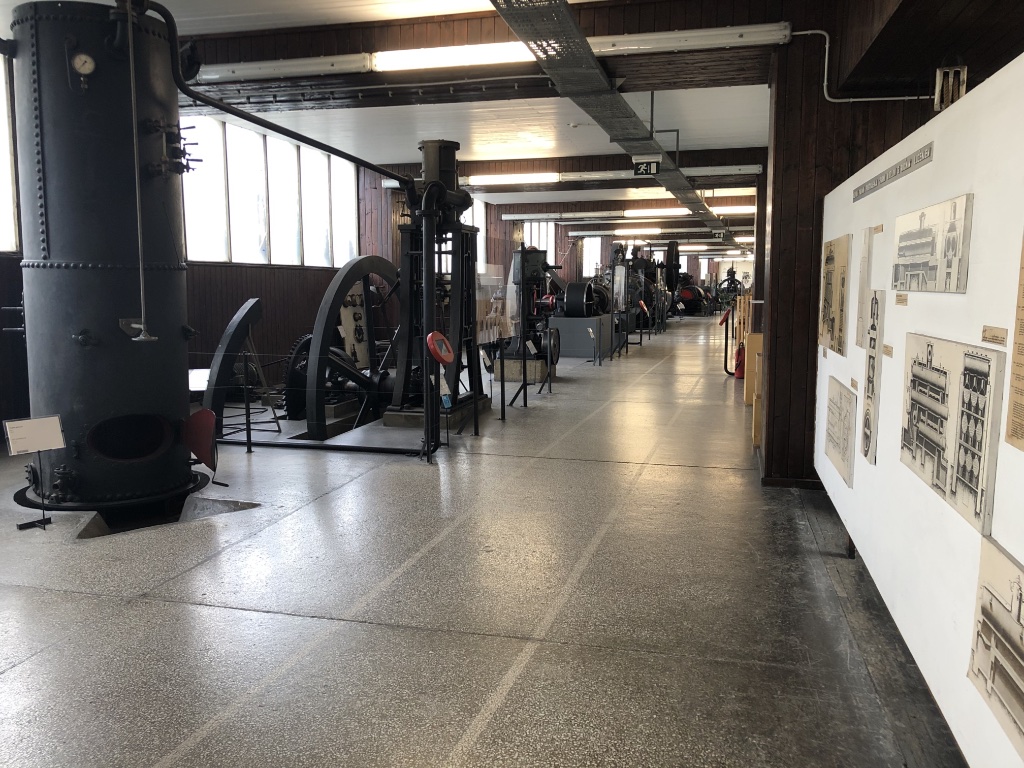
2078 This hallway has technical designs on one wall and the actual components along the other. Pictured here are mostly turbines and generators.

2082 A large section of the Technical Museum is about mining. There is even a replica mine in the basement (“sretno” is “good luck” in Croatian). The mine was closed when I visisted, but I was told I could return in the afternoon for a tour, so I did.
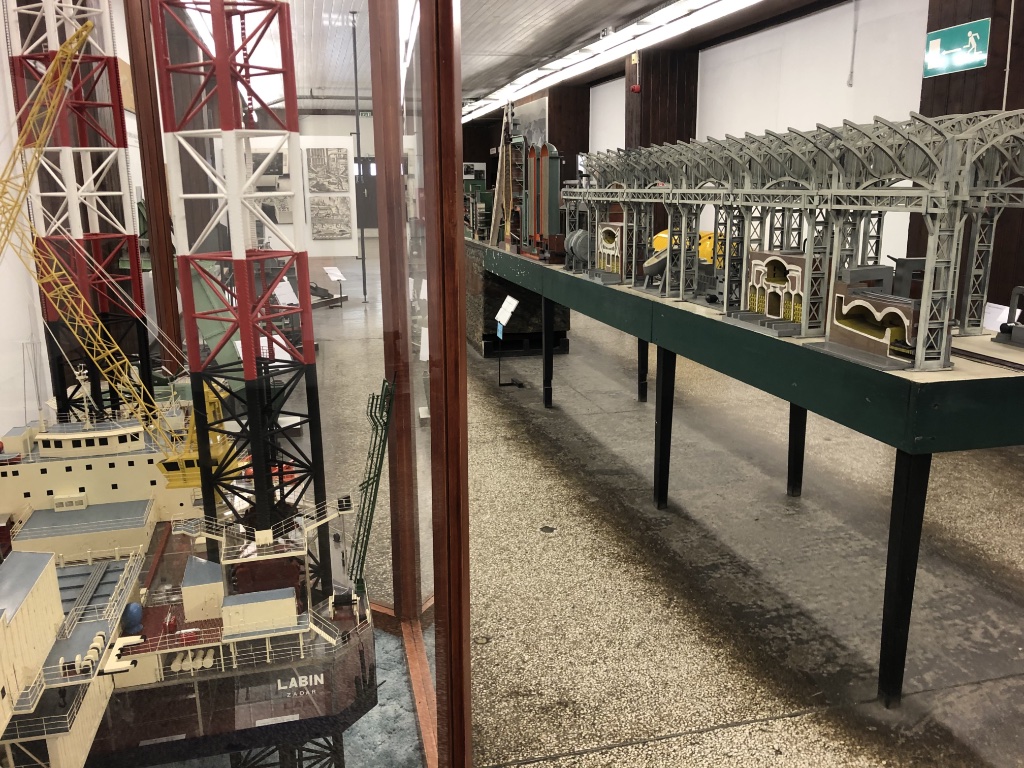
2083 Models of an oil platform in the Adriatic Sea and an iron processing plant (I'm not sure where). The plaque mentions “winning, transport and processing of iron ore”, but that was definitely supposed to be translated as “obtaining...”.
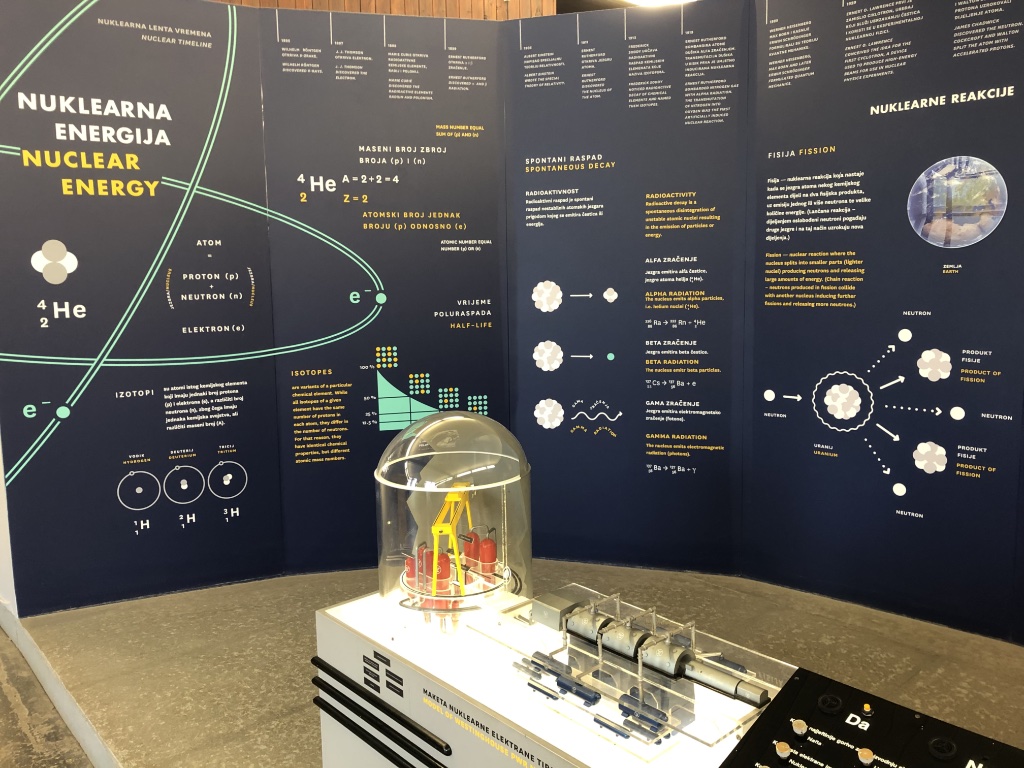
2189 There are also exhibits about nuclear energy...
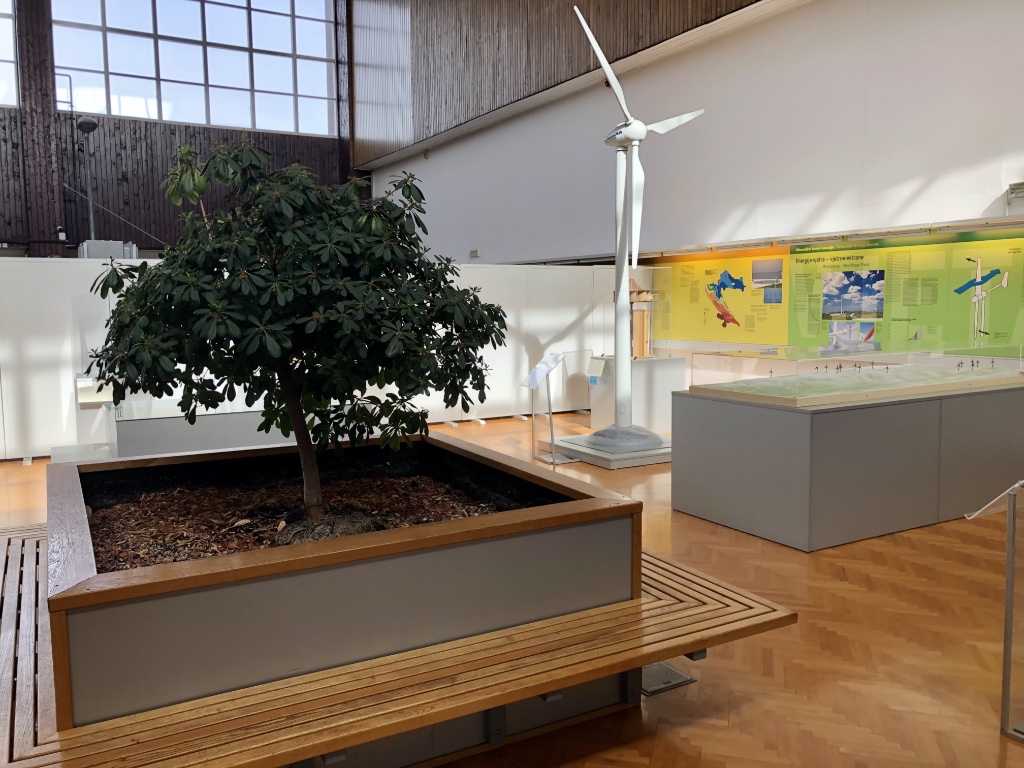
2110 ...and renewable energy.
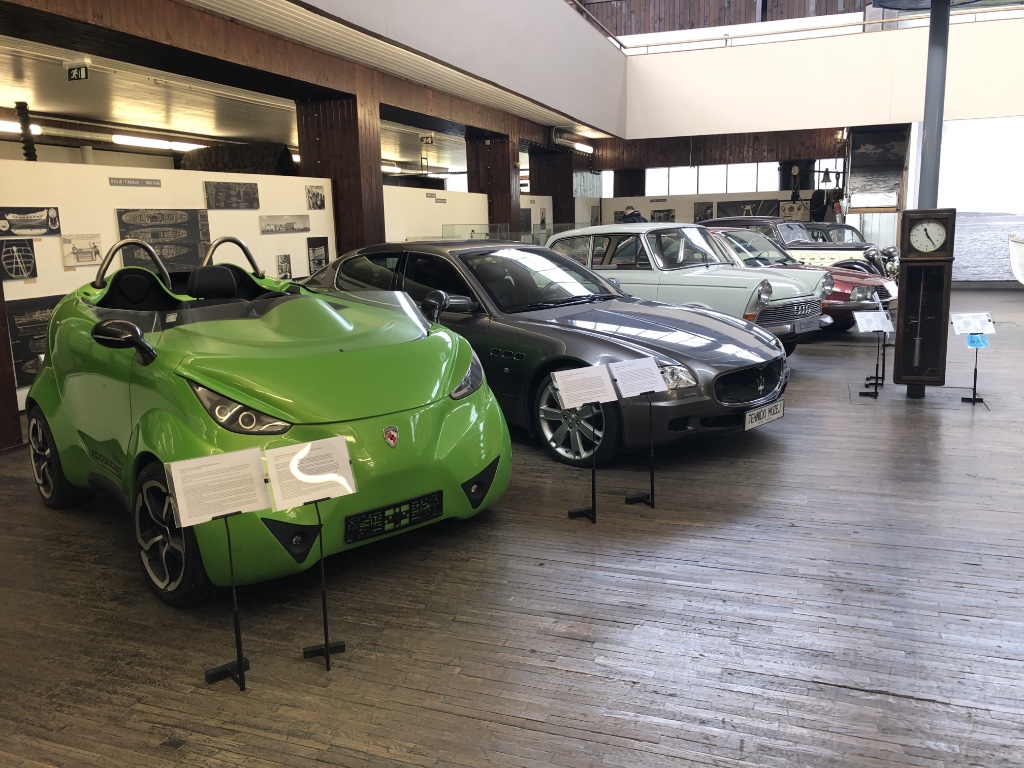
2112 Croatia is in fact notable in the history of electric vehicles. In 2011, Croatian invetor Mate Rimac developed the fastest electric car in the world. That one is not in this picture, but the green car, a DOK-ING XD Concept, was the first registered electric car produced in Croatia.

2115 The Botanical Gardens were closed during my walk on Sunday, but they are open now.
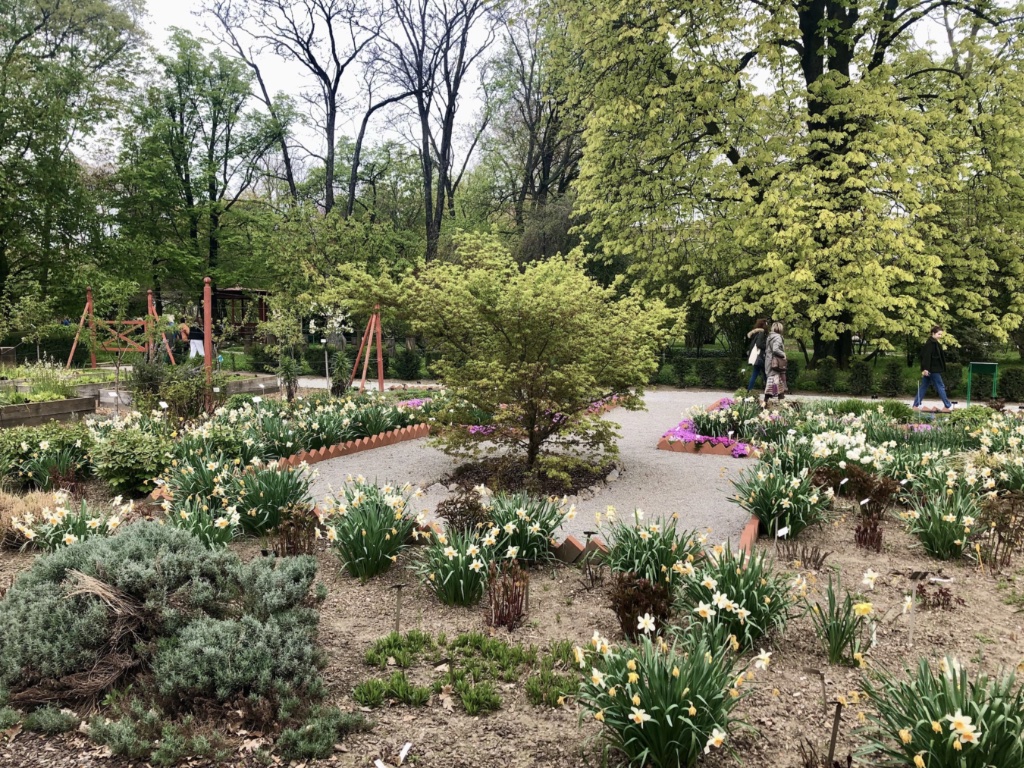
2149 Probably the Botanical Gardens will look even nicer in a few weeks.

2144 This photo is blurry and dark, but it was also taken with the flash on. Without flash the photo would be completely black. This room is in the Typhlological Museum, that is, a museum about blindness. (The rest of the museum has lights and text; it is just this one room that is black.)
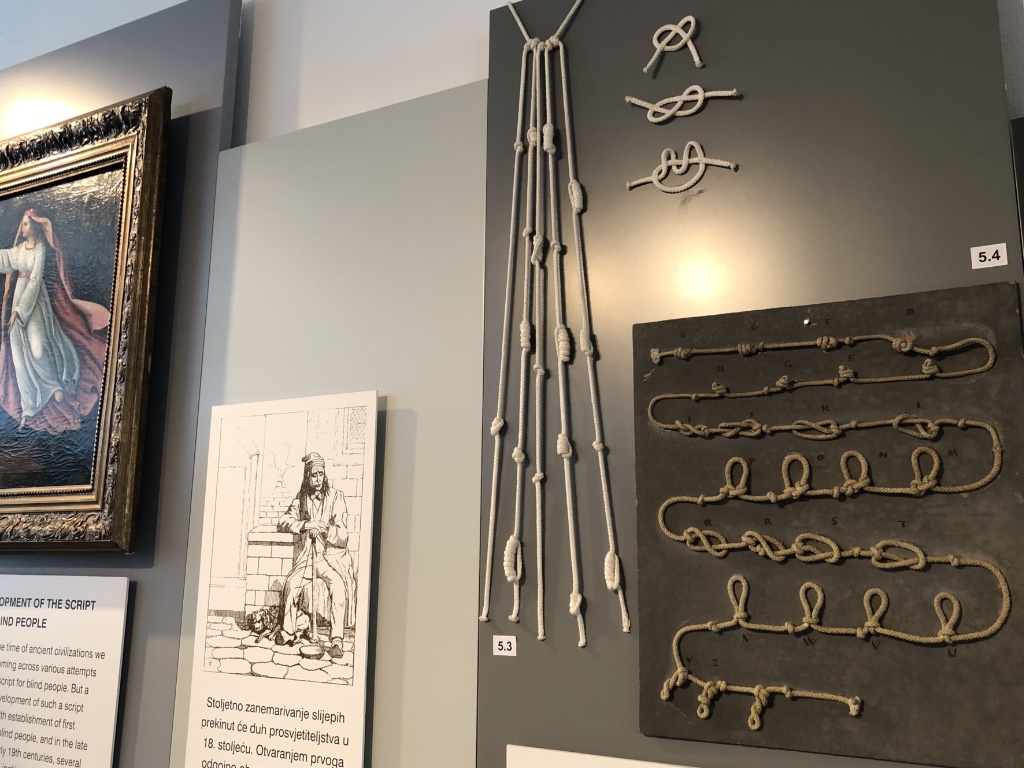
2127 I had heard of quipu—an Incan method recording numbers using knots in rope—from a math history perspective, but apparently this was also suggested as a method of writing for the blind in the 1800s, along with embossed script (French), needle script (German countries), and Moon script (England).
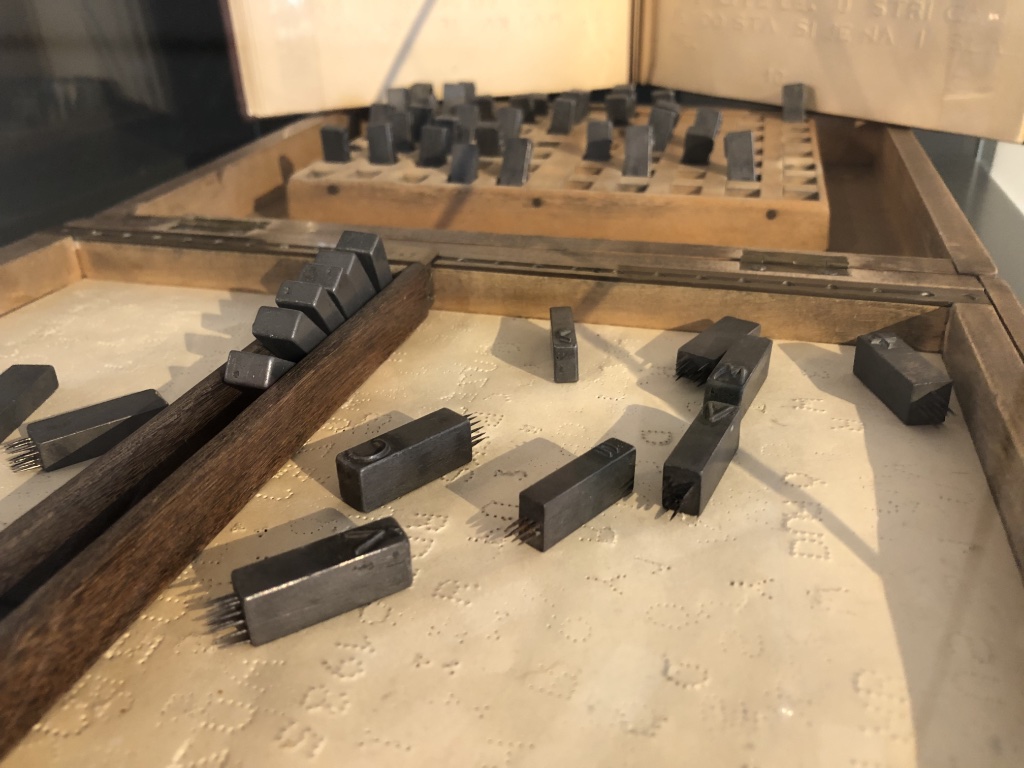
2129 In Croatia in the 1800s, the predominant blind script used needles to puncture versions of Latin characters into paper.

2134 By the early 1900s, Braille had become the standard for blind print. This machine is from 1930s New York. I have a vague memory of my grandmother Barbara showing me her Braille typewriter when I was very young.
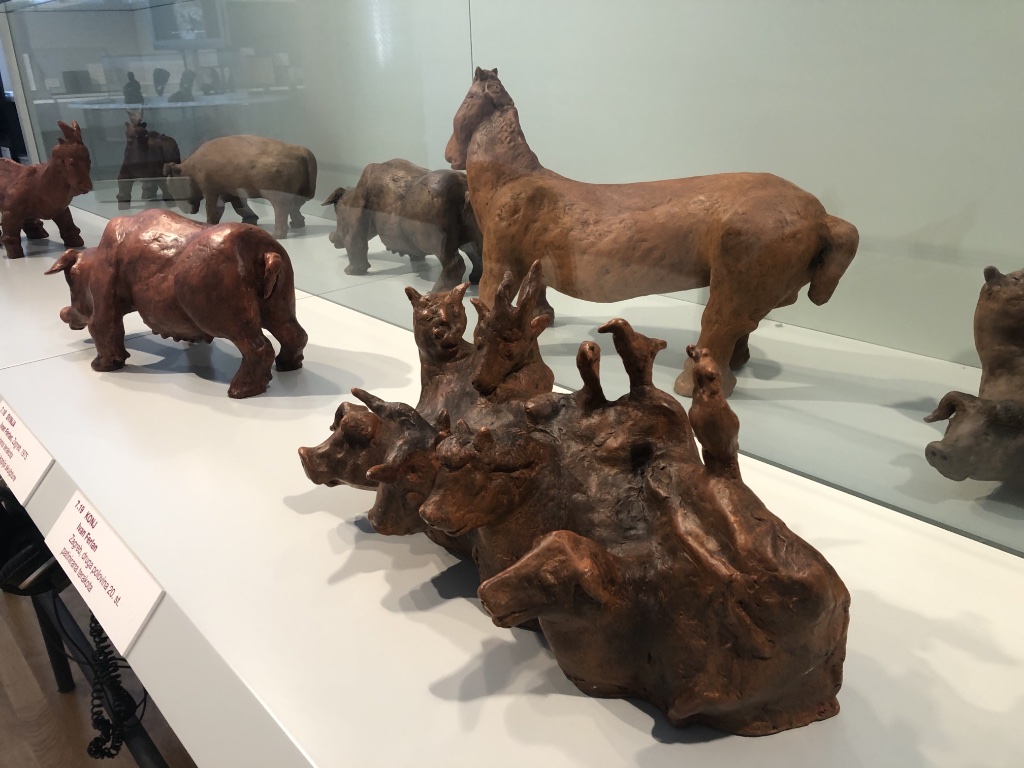
2137 These were made by blind sculptors. The originals are behind glass, but the replicas are there for museum-goers to touch.
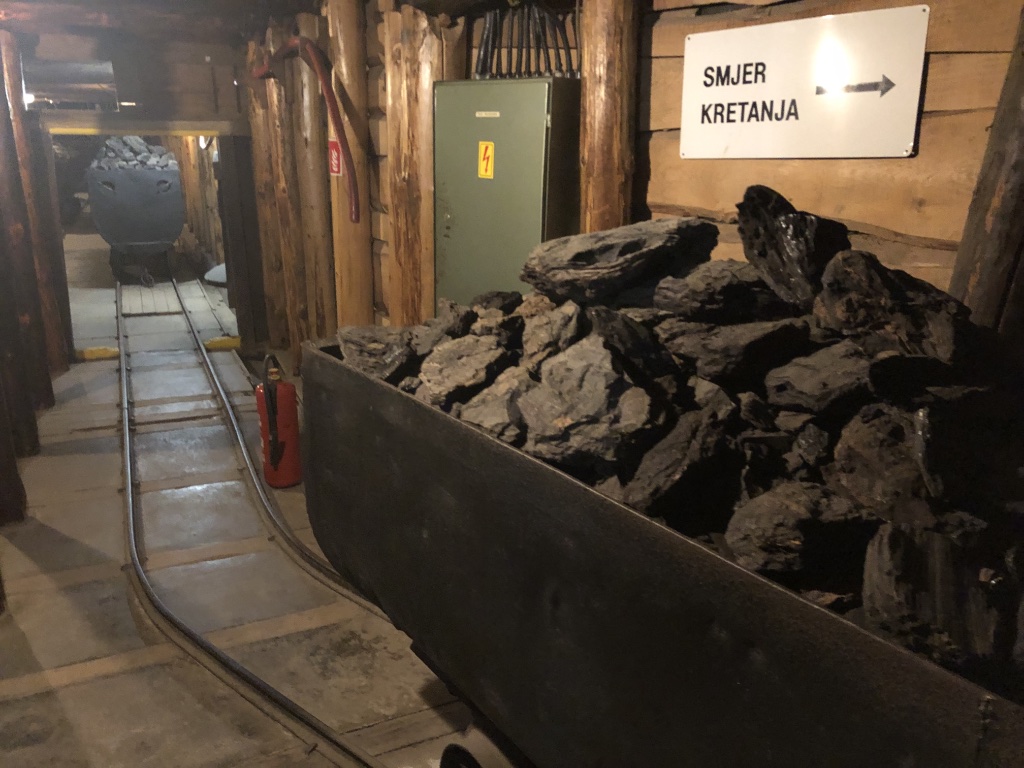
2174 I returned to the Technical Museum for a tour of the mine.
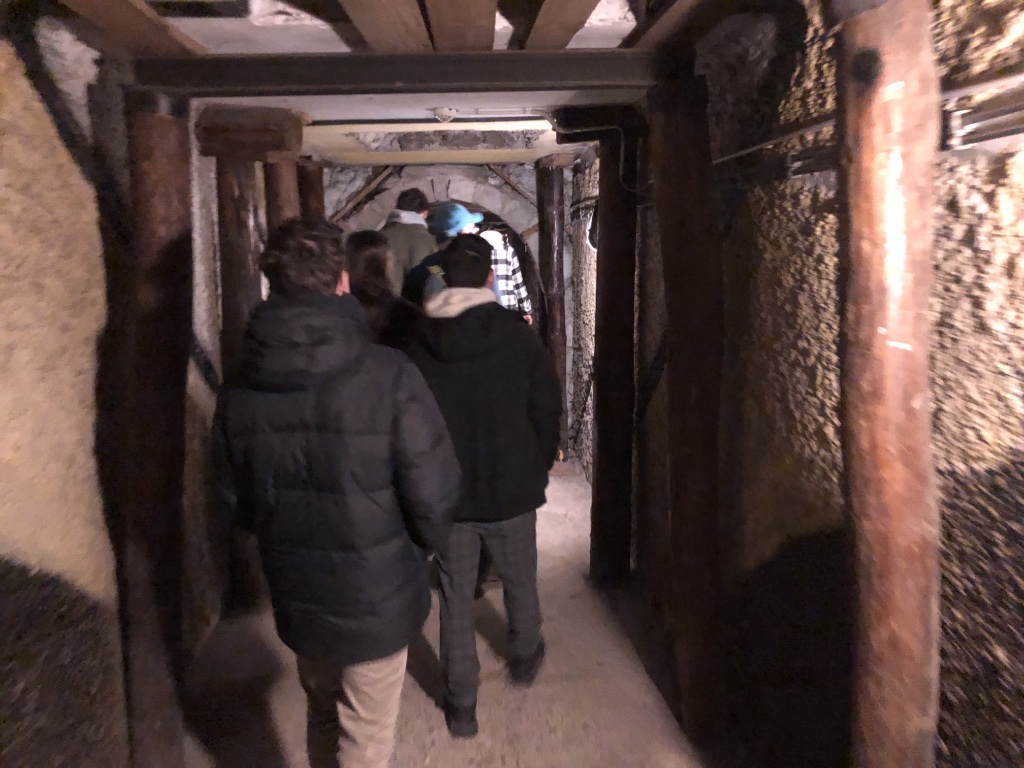
2179 Each section of the mine is based on a different actual Croatian mine, such as a bauxite mine in Istria or a zinc mine in Ivanščica.

2152 The Tesla room also has a live demonstration (simultaneous with the mine tour, with one in English and the other in Croatian, then swapped).
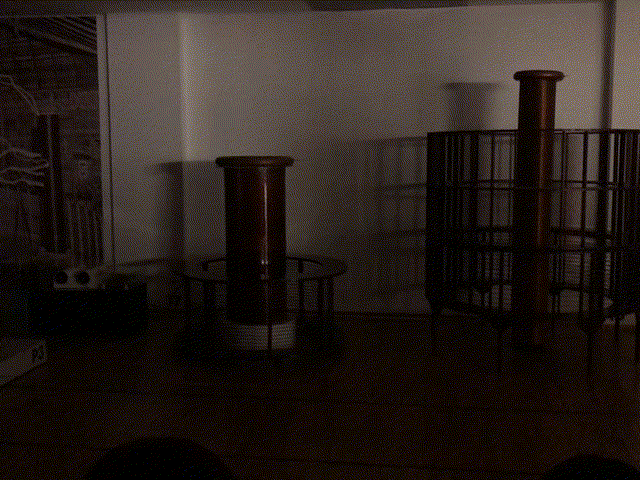
2173c There are better videos of the Tesla coil arcing, but I took this one, so it's going in my album.
Wednesday, 12 April 2023
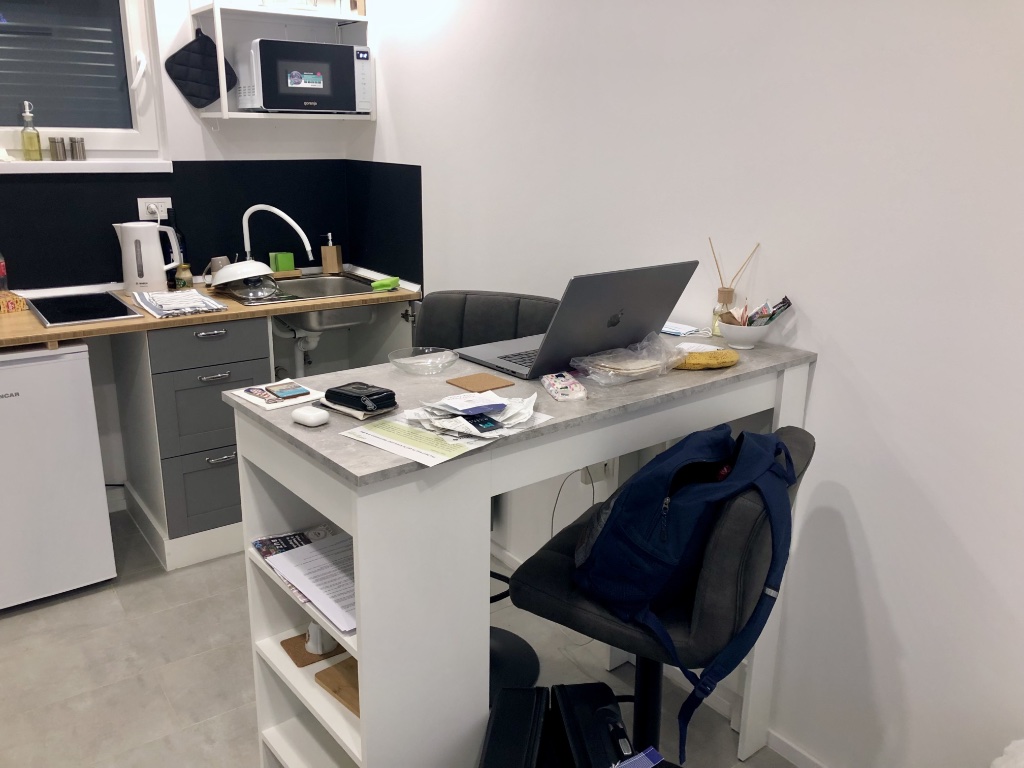
2191 This last day is just travel, so I'm including some miscellaneous photos from the past week. Here is the small kitchen in my studio AirBnB. This is probably the smallest AirBnB I've ever stayed in, but it was nice.

2073 Restaurants in Zagreb are surprisingly sparse outside of the really central area. However, cafe bars are everywhere. Notice that there is no food in this photo, just drinks.
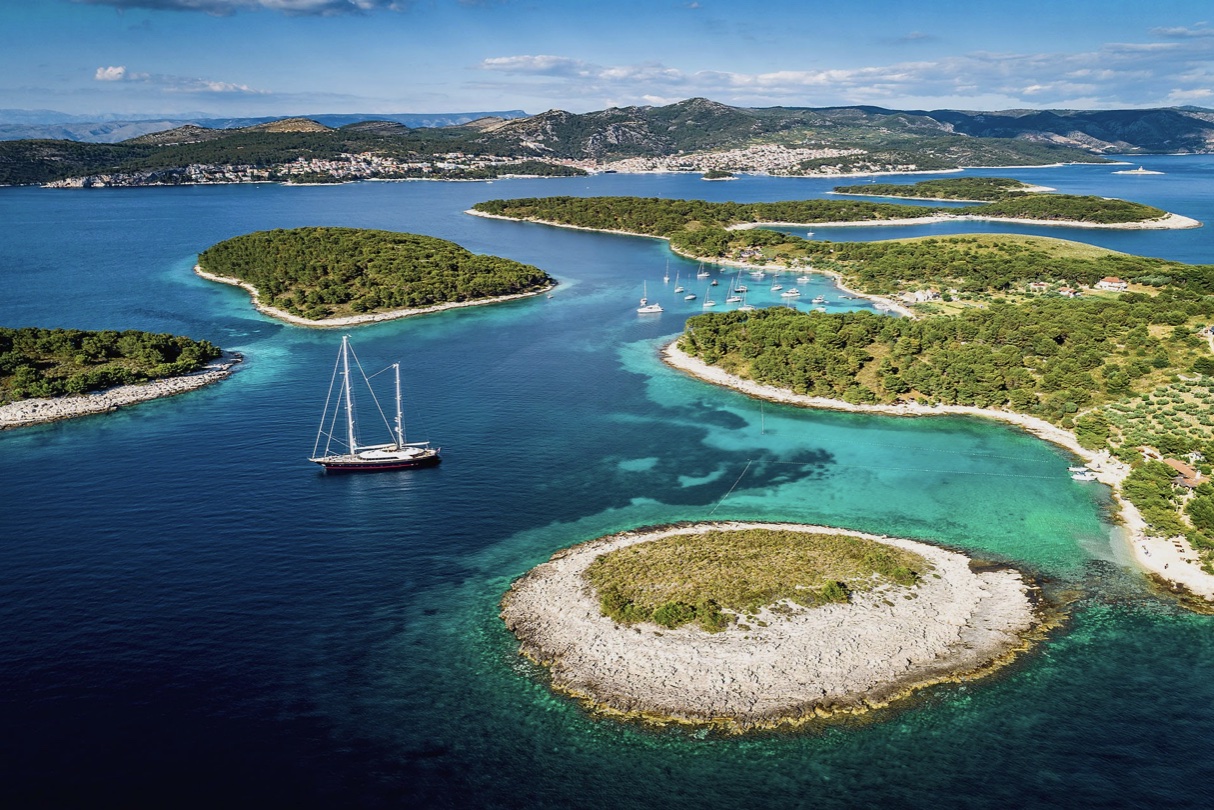
3000 (I did not take this photo.) I did not go to the coast of Croatia because it's still a bit cold for swimming and because I didn't want to switch hotel rooms (by car, the coast can be a day trip, but trains and busses are inconvenient, and I did not want to rent a car). In retrospect, maybe I should have gone, but I might visit the Dalmatia region of Croatia (perhaps along with visiting Bosnia and Herzegovina and Montenegro) on another trip.
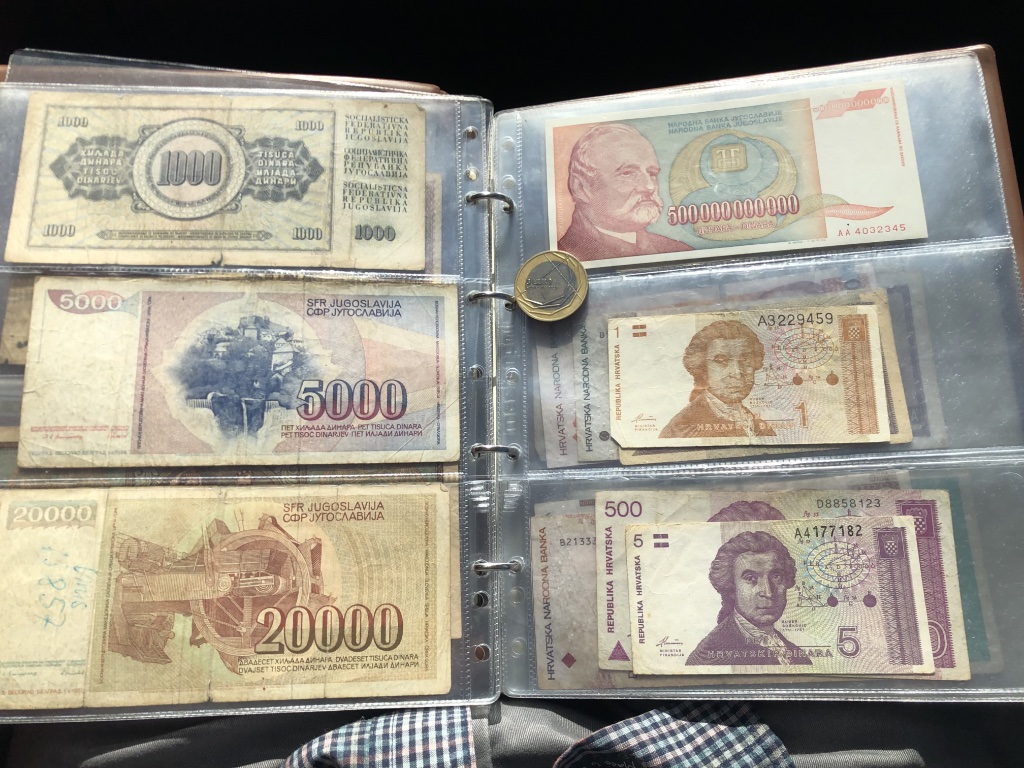
2070 Our tour guide to Slovenia also liked to collect old bills. At the beginning of 1993, $1 US was worth 750 Yugoslav dinar. By the end of that year, $1 US was 1,775,998,646,615 dinar. This lead Serbia to print a 500 BILLION dinar note (shown here top right).
By the way, Croatia adopted the euro in January 2023, literally just a few months ago. Most restaurants and shops still list prices in both euro and kruna.